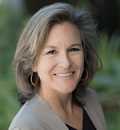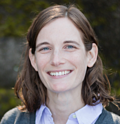This webinar provided an introduction to the role of building materials in influencing chemical exposures, as well as the latest science on disproportionate chemical exposures among pregnant people, infants and children. The speakers explained the impacts of building materials across the product life cycle, exploring the ways in which manufacture, use and disposal of building materials all can contribute to chemical exposures.
This session also provided a brief explanation of recent findings from the Environmental influences on Child Health Outcome (ECHO) Program, illuminating the chemical exposures of individuals in the US and the ways in which these exposures vary by race and ethnicity. This webinar was designed to be of interest for building professionals, decision makers, and others who are working to create healthy homes and communities.
El’gin Avila, PhD (ABD), MPH, CPH moderated the session and provided a brief introduction to the role of building products in chemical exposures and children’s health outcomes. He discussed the role of both new construction and existing building materials in contributing to disproportionate chemical exposures among communities of color.
Tracey Woodruff, PhD, MPH discussed how exposure to toxic chemicals from housing materials can be explored through the measurement of chemicals in people’s biological samples, such as in blood, urine, and hair, also known as biomonitoring. She discussed disparities in exposure to toxic chemicals found in housing materials from biomonitoring studies, and explore the disproportionate impact of those exposures on marginalized communities and vulnerable populations, including pregnant people and children.
Rebecca Stamm, MS shared examples of how toxic chemicals used in building products affect communities, workers, and building occupants, especially children. The world is poised to double the current global building stock in the next 40 years. Because many building products contain or use toxic chemicals in their production, this dramatic expansion of buildings could have a devastating impact on people and the planet. She also highlighted tools and resources available to help develop, advocate for, and choose safer products.
Featured Speakers
 El’gin Avila, PhD (ABD), MPH, CPH is Director of Occupational and Environmental Health and Equity (OEHE) at BlueGreen Alliance. Originally from Detroit, Michigan, El’gin’s passion stems from his experiences and knowledge of environmental and social injustices that have plagued disenfranchised and marginalized communities both in the US and abroad. As OEHE Director, he works to bring a more just approach to environmental and occupational health structures and systems. He aims to ensure that vulnerable and historically marginalized populations engaging in precarious work are protected regardless of worker classification, and looks to elucidate precarity and financial instability as a factor of worker health and wellness. El’gin uses his technical expertise as an industrial hygienist to enhance the capacity of BGA’s occupational and environmental health agenda.
El’gin Avila, PhD (ABD), MPH, CPH is Director of Occupational and Environmental Health and Equity (OEHE) at BlueGreen Alliance. Originally from Detroit, Michigan, El’gin’s passion stems from his experiences and knowledge of environmental and social injustices that have plagued disenfranchised and marginalized communities both in the US and abroad. As OEHE Director, he works to bring a more just approach to environmental and occupational health structures and systems. He aims to ensure that vulnerable and historically marginalized populations engaging in precarious work are protected regardless of worker classification, and looks to elucidate precarity and financial instability as a factor of worker health and wellness. El’gin uses his technical expertise as an industrial hygienist to enhance the capacity of BGA’s occupational and environmental health agenda.
 Tracey Woodruff, PhD, MPH, is the Director of and Alison S. Carlson Endowed Professor for the Program on Reproductive Health and the Environment (PRHE) and is a Professor in the UCSF Department of Obstetrics, Gynecology and Reproductive Sciences and the Philip R. Lee Institute for Health Policy Studies. She is also the Director of a newly awarded NIEHS Environmental Health Core Center grant, the Environmental Research and Translation for Health (EaRTH) Center at UCSF. She is a recognized expert on environmental pollution exposures and impacts on health, with a focus on pregnancy, infancy and childhood, and her innovations in translating and communicating scientific findings for clinical and policy audiences. She has authored numerous scientific publications and book chapters, and has been quoted widely in the press, including USA Today, the San Francisco Chronicle and The New York Times. Before joining UCSF, Dr. Woodruff was a senior scientist and policy advisor for the U.S. EPA’s Office of Policy. She was appointed by the governor of California in 2012 to the Science Advisory Board of the Developmental and Reproductive Toxicant (DART) Identification Committee.
Tracey Woodruff, PhD, MPH, is the Director of and Alison S. Carlson Endowed Professor for the Program on Reproductive Health and the Environment (PRHE) and is a Professor in the UCSF Department of Obstetrics, Gynecology and Reproductive Sciences and the Philip R. Lee Institute for Health Policy Studies. She is also the Director of a newly awarded NIEHS Environmental Health Core Center grant, the Environmental Research and Translation for Health (EaRTH) Center at UCSF. She is a recognized expert on environmental pollution exposures and impacts on health, with a focus on pregnancy, infancy and childhood, and her innovations in translating and communicating scientific findings for clinical and policy audiences. She has authored numerous scientific publications and book chapters, and has been quoted widely in the press, including USA Today, the San Francisco Chronicle and The New York Times. Before joining UCSF, Dr. Woodruff was a senior scientist and policy advisor for the U.S. EPA’s Office of Policy. She was appointed by the governor of California in 2012 to the Science Advisory Board of the Developmental and Reproductive Toxicant (DART) Identification Committee.
 Rebecca Stamm, MS is passionate about improving human and environmental health through safer products. As Senior Researcher at Healthy Building Network, she works with the team to conduct vital research on the life cycle chemical impacts of materials to drive transparency and innovation. Rebecca has a B.S. from the Rose-Hulman Institute of Technology and an M.S. from Purdue University, where she studied Chemical Engineering and has worked extensively in building product and chemical hazard research.
Rebecca Stamm, MS is passionate about improving human and environmental health through safer products. As Senior Researcher at Healthy Building Network, she works with the team to conduct vital research on the life cycle chemical impacts of materials to drive transparency and innovation. Rebecca has a B.S. from the Rose-Hulman Institute of Technology and an M.S. from Purdue University, where she studied Chemical Engineering and has worked extensively in building product and chemical hazard research.
This webinar was the first in a three-part series exploring the disproportionate exposure of pregnant people, infants, children of color and other vulnerable populations to toxic chemicals and the ways in which choosing healthier building materials can protect vulnerable populations. This series was co-hosted by BlueGreen Alliance, the Collaborative for Health and Environment, the Program for Reproductive Health and the Environment, and Healthy Building Network, in partnership with Green Building Alliance, the Center for Environmental Health, and the Children's Environmental Health Network.
